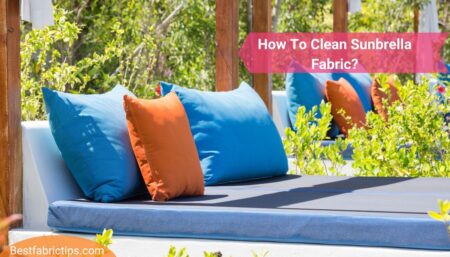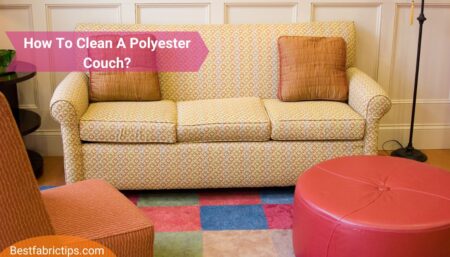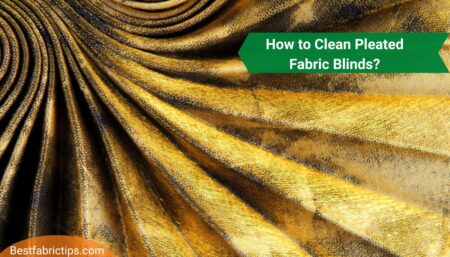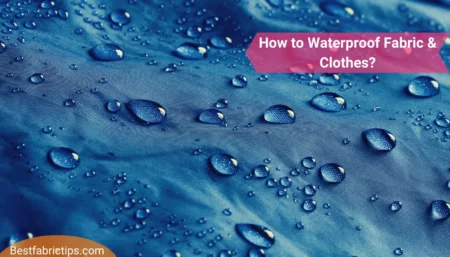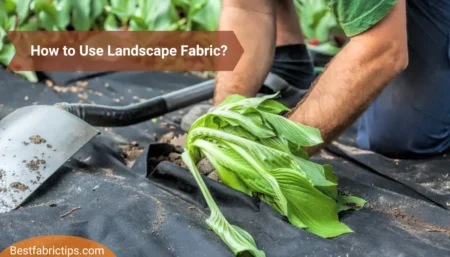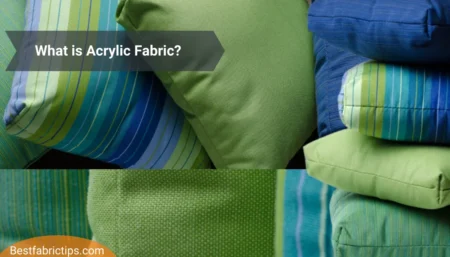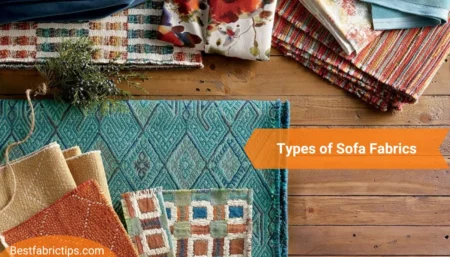If you are wondering how you can remove Landscape Fabric, then here are some really easy steps to follow. All you have to do is, understand the process and start removing it without damaging your plants. But before we move forward to that, let me explain you more about the Landscape Fabric.
What is Landscape Fabric?
Landscape fabric can be made from woven fibers or can be formed as a solid sheet with perforated holes to enable water to seep through to the ground underneath the fabric. Some manufacturers include UV protection in their products to help extend the life of the cloth. It is available in rolls (see an example on Amazon), which are normally at least 3 feet wide and up to 200 feet (or more) in length, depending on the manufacturer.
The price ranges from around $.45 per square foot to $.80 per square foot, depending on the brand and thickness. Fabric that is thicker tends to run a little more. It is required to use landscape pins to fix the fabric, which are available separately for around $.10 each and will add an additional $0.50 per square foot to your total material cost.
- What is Landscape Fabric?
- Characteristics of the Best Landscape Fabric
- Water evaporation is reduced as a result of the following factors
- It prevents soil erosion by a variety of means
- Maintains the mulch’s position
- Can I use a tarp instead of landscape fabric?
- What is the easiest way to remove Landscape Fabric?
- Step 1: Plants should be prepared in advance
- Step 2: Remove the mulch from the fabric
- Step 3: Use a pen or pencil, draw the boundaries of the garden plot
- Step 4: Remove the soil from the surface of the ground
- Step 5: Start by cutting the fabric
- Step 6: Take the Fabric Out of the Room
- Step 7: Dispose of the Fabric
- Conclusion
Characteristics of the Best Landscape Fabric
Water evaporation is reduced as a result of the following factors
Landscape fabric, in addition to being excellent at killing weeds, also helps to preserve soil moisture by delaying the loss of water. This is especially beneficial during the summer months when the soil is particularly dry. Because landscape cloth reduces water evaporation, you may reduce the amount of water you use to irrigate your plants as a result.
It prevents soil erosion by a variety of means
Landscape fabric, in addition to acting as a physical barrier, also helps to prevent soil erosion. The use of landscape fabric can help avoid soil washout in areas that receive a lot of heavy rain and where soil washout is a problem. Landscape fabric can help prevent soil washout in areas that receive a lot of heavy rain.
Maintains the mulch’s position
Landscape fabric is frequently used as a subsurface layer beneath hardscaping. It’s placed around trees, shrubs, and bushes to provide shade. It may also be put on top of other materials such as gravel, rock, or hardscaping. Landscape cloth prevents inorganic mulches such as gravel and stones from sinking into the soil and causing erosion. Landscape cloth will protect any non-organic mulching products that you have used in your outdoor space.
Can I use a tarp instead of landscape fabric?
A tarp or other sort of thick plastic sheeting beneath the gravel, rather than landscape fabric, might be an attractive option in some circumstances. In some cases, it may be less expensive than high-end fabrics, for example, and the plastic may be found in quite large quantities. In other words, you might theoretically cover the whole area under your landscaping with a single sheet, ensuring that there are no seams where weeds can enter.
However, tarps and other kinds of plastic are fully impervious to water, which is a disadvantage. Any rain that falls on the rock-covered section of your property simply flows off, rather than sinking into the soil and being kept for use by neighboring plants or your grass, as it would otherwise. In addition, the impermeable plastic prevents oxygen from reaching the soil beneath the rock beds, suffocating the creatures that live there. Between this and the weight of the rock, it is possible to convert productive topsoil into barren, crushed “hardpan” in a very short period of time.
What is the easiest way to remove Landscape Fabric?
Landscape fabric is used by the majority of gardeners since it is one of the most effective methods of preventing invasive and undesired weed growth. However, if you keep them in place for an extended period of time, they might certainly pose issues. Having said that, removing the landscaping fabric after an excessive amount of mulch has piled on top is not a simple task. And if you do not know how to correctly remove landscape fabric, the task might become even more difficult.
However, as a result of your accidental discovery of this essay, you will no longer have to be concerned about that.
Step 1: Plants should be prepared in advance
While the plants remain in their current locations, it is surely conceivable to remove the cloth covering. However, the process might become difficult, and there is a good probability that you will damage the roots as a result of your efforts.
As a result, you must begin by interacting with the plants themselves. Begin by digging around the plants with a shovel to loosen the soil surrounding them. Check to make sure that you are not inflicting too much harm on the roots before continuing. With the shovel, you will make a circle around the plant, which will free up the landscape fabric and make it easier to remove it from the rest of the area.
Step 2: Remove the mulch from the fabric
If there is an excessive amount of mulch on the cloth, work on removing it. A disproportionate amount of mulch will make the material heavier and more adherent to the ground, making the removal process more difficult than it has to be. To begin, gather your mulch with a rake and mound it. Please be certain that the mulch does not accumulate on the cloth. That will place too much weight on one side of the fabric, making it difficult to draw the cloth through. Instead, put them up outside the fabric area to keep them out of the way.
Step 3: Use a pen or pencil, draw the boundaries of the garden plot
Now that the mulch has been removed from the garden, it will be time to plan out the different portions of the garden. By doing so, you will be essentially highlighting the spots where the cloth is beginning to take shape. This marking will make the removal procedure much easier because you will have a clear sense of where to begin the process.
Step 4: Remove the soil from the surface of the ground
After you’ve marked out the pieces, get a garden hoe or shovel and start digging. Use this to remove the very top layer of soil from the ground surface. You should work in layers of soil since doing so will make it easier for you to remove the entire topmost layer of dirt from the cloth. Remove as much soil as possible until you can see the cloth. To put it another way, till the cloth is revealed.
After that, you’d have to go to work on the sections. Remove the soil from those areas as well, using a garden hoe or shovel if necessary. Make sure that all of the dirt is moved away from the cloth rather than placing it on top of the fabric. This will guarantee that the landscape fabric does not become suffocating heavy.
Step 5: Start by cutting the fabric
Once you have finished removing the topmost layer of dirt, you may use a pair of scissors or a knife to finish the job. You would be dividing the cloth into parts using scissors. We like to employ the quarter-sectioning approach since it makes the whole removal procedure a piece of cake to complete. However, you are free to travel less or more than that.
Step 6: Take the Fabric Out of the Room
Now that the cloth has been cut into portions, it is time to take them out of the machine. Slowly draw it away from you, starting at the very end of the portion you are working on. Make certain that you are not tugging too hard on the cloth, since this can cause the intertwined roots to be cut off.
Instead, use the gentle pull approach to remove any roots that have been entangled with the cloth. Pull each of the parts out one by one, following the same technique, then stack them all together in one spot. Continue on to the next step once you have finished removing the textiles from your home.
Step 7: Dispose of the Fabric
The last and final stage would be to get rid of the cloth completely. Giving it a thorough shake after removing the scenery from the ground is a smart idea. This will help to remove any heavy soil that has become adhered to the cloth and will make the disposal procedure smoother overall. After the surplus soil has been removed, the landscape should be disposed of.
Conclusion
Landscape fabric is intended to suppress weeds, and it is likely to be successful for the first year or two after installation—but be prepared to pick weeds that develop on top of the fabric later on. In order to prevent blown-in seeds from sprouting, you may want to apply a pre-emergent herbicide to the top of your mulch, such as Preen (see on Amazon), at the start of each new growing season.
Established plants will not be harmed by a pre-emergent herbicide. Mulch should be added as needed. The only organic mulches that will likely require this are those that decay and thin out over time; gravel and rock mulch, on the other hand, will remain almost unchanged from when they were initially placed.
With today’s hectic lifestyles, many people don’t have the time to commit hours each week to weeding flower beds and manicured rock gardens. The use of a high-quality weed control fabric may significantly reduce weeding tasks, and the fabric will also help retain moisture in the soil, which will go a long way toward water conservation.




